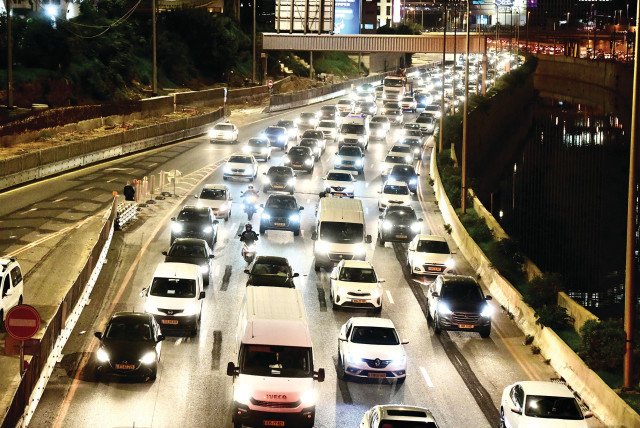Finance Committee approves bill for Tel Aviv congestion charge

After lengthy discussions, the Knesset Finance Committee has approved the bill for the congestion charge for vehicles in the Tel Aviv Metropolitan region for second and third reading in the plenum. The bill says, "The aim of the law is to cut traffic congestion on the roads and reduce the high cost to the economy and the damage entailed to the quality of life and quality of the environment, by imposing a special tax on vehicles entering and leaving the Gush Dan region during peak hours on business days."
According to the data and estimates presented to the Finance Committee, the tax will bring NIS 1.3 billion annually into the state coffers and by law some of this amount will be transferred to finance public transport projects like the light rail and metro.
According to the bill, the congestion charge the Tel Aviv metropolitan area will be divided into inner, middle and outer rings with charges imposed for entering them during the morning and evening rush hours. The inner ring will include central and south Tel Aviv. The middle ring will include Ramat Gan, Givatayim, Bnei Brak, Holon and Bat Yam and Azur. The outer ring will include Herzliya, Petah Tikva, Kiryat Ono, Givat Shmuel, Ganei Tikva, Yehud Monoson, Or Yehuda, Rishon Lezion and Beit Dagan.
Between 6.30 am and 10 am for vehicles traveling towards Tel Aviv, it will cost NIS 5 to enter the outer ring, NIS 10 to enter the middle ring and an additional NIS 10 to enter the inner ring for a maximum of NIS 25. Between 3 pm and 7 pm cars in both directions will pay NIS 2.50 to enter the outer ring, NIS 5 to enter or exit the middle ring and an additional NIS 5 to enter or exit the inner ring. Motorcycles (and motor scooters), buses and emergency vehicles will travel for free, while trucks will pay double. Taxis will pay 50% which will immediately be added on to their passenger's fares.
The charge will be imposed from March 2025, a year later than originally planned and there is a clause in the bill giving the Ministers of Finance and Transport the discretion to postpone imposing the charge until March 2026. A government company will be established to plan, set up, operate and maintain the project including all the signs, cameras and other infrastructure for the three rings as well as collecting the charge.
Related News
